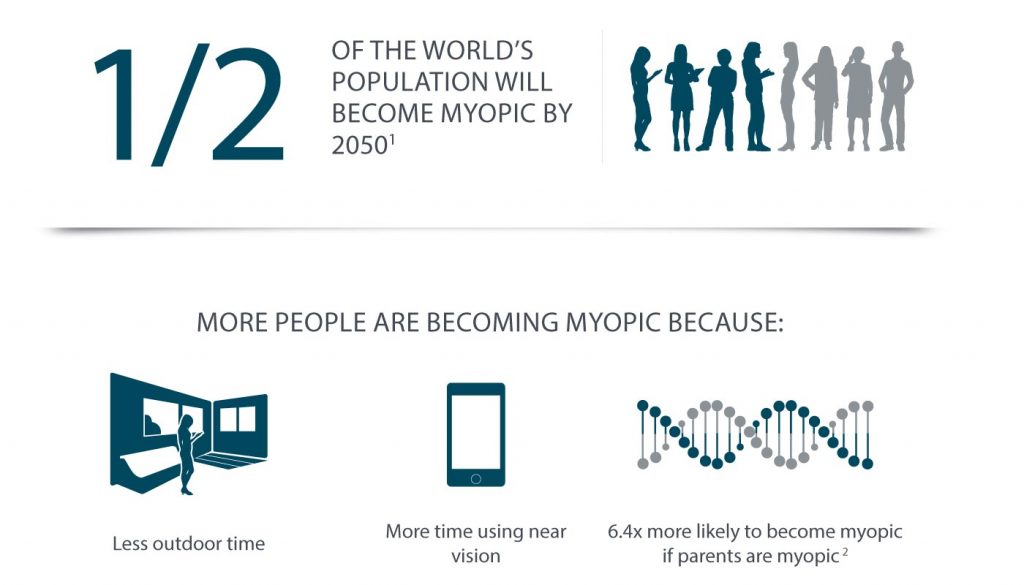Myopia, or nearsightedness is characterised by the difficulty of seeing clearly an object in the far distance.

It is an extremely common refractive error—in fact, in many developed countries, about half of the population needs correction for myopia.
If you are nearsighted, you may have difficulty reading road signs, watching TV or seeing things from afar. Bad distance vision can also result in feeling fatigued when driving or playing sports.
Nearsightedness is caused by the eyeball being too long in comparison to the refractive power of the crystalline lens. This causes the focusing to take place in front of the retina, which results in the retinal image being blurred, much like a photo taken by an unfocused camera lens.
The simple solution to rectify nearsightedness is to wear a corrective lens that will focus the light back onto the retina. Lenses that correct myopia are sometimes called “negative lenses” because they send the light focus backwards.
In Japan and in many other countries, a large part of the population suffers from myopia, and Nikon has developed unique optical technologies to give them back the best vision at far distances. Discover Myopsee, Nikon ‘s new generation of lenses for myopes that meet all your expectations in terms of vision and clarity.
Did you know ?

2.Ip et colll. Ethnic differences in the impact of parental myopia: findings from a population-based study of 12-year-old Australian children. Invest Ophthalmol Vis Sci 2007; 48: 2520-2528.73
